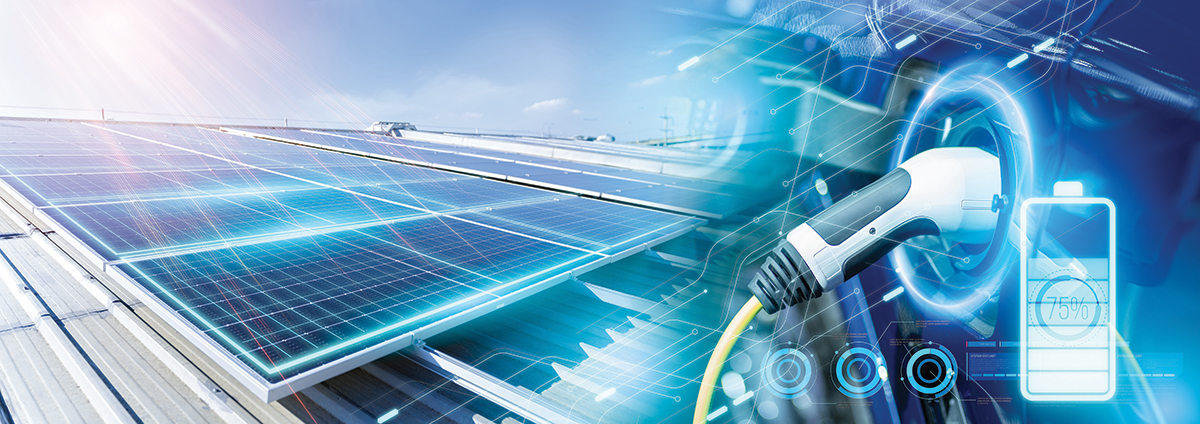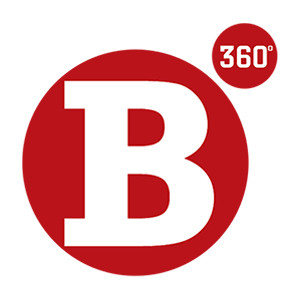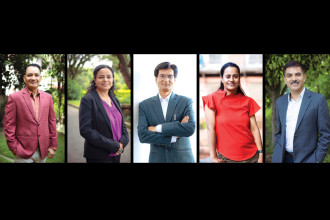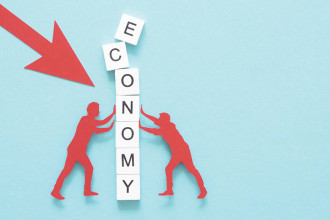
Nearly one in five cars sold in 2023 was electric. Electric car sales neared 14 million units in 2023, 95% of which were in China, Europe and the United States. More than one in three new car registrations in China was electric in 2023, over one in five in Europe, and one in ten in the United States. Closer home, in India, electric car registrations were up 70% year-on-year to 80,000, compared to a growth rate of under 10% for total car sales. Around 2% of all cars sold were electric with India’s Go Electric campaign fostering demand. 2024 is expected to address some of the most pressing concerns of EV adoption; battery range, efficiency and charging times. The future of EVs hinges on the development of next-generation battery chemistries. These batteries promise longer ranges and faster charging and bring the world closer to a sustainable energy circle and accelerating the shift to electric mobility.
The trends in EV manufacturing for 2024 will not only have a substantial impact on the industry but also redefine the approach to mobility and sustainability. Adoption of AI and technology will reimagine the automotive ecosystem. Experts say that the journey ahead is challenging but filled with unprecedented opportunities for those brave enough to seize them.Nepal is also showing a preferential tilt towards EVs, recently seen in the enthusiasm and purchase of electric vehicles at the NADA Auto Show.
To understand the current trend and to understand market dynamics, in this edition of Business 360 we spoke to renowned automobile distributors of the country: Gaurav Sharda, Director, Sharda Group; Suryansh Vaidya, CEO, Ather, VOITH; RK Singh, General Manager, Shangrila Motors; and Sachin Aryal, General Manager, Paramount Motors.
How do you view the shift to electric vehicles in Nepal? What is this trend dependent on?
GAURAV SHARDA: The shift to electric vehicles (EVs) in Nepal is gradually growing due to environmental concerns, rising fuel costs and government incentives such as reduced import taxes along with the development of charging infrastructure. As Nepal generates 100% renewable energy and further has a strong hydropower potential, EVs offer a sustainable solution, but further efforts in infrastructure and public awareness are essential for broader adoption. The vehicles and features currently on offer on an EV also stand to be much superior to their ICE (internal combustion engine) alternatives at the similar price range.
SURYANSH VAIDYA: The transition to battery electric vehicles (BEVs) in Nepal is remarkable when viewed on a global scale. To understand the factors behind such a rapid market shift, it’s evident that government support has played the most significant role. It is crucial to analyse the nature, reasons and future implications of these policies. Historically, the government has treated the automotive industry as a luxury sector but we must now question whether the engine itself or the entire vehicle is seen as the luxury. As the global mobility landscape shifts, Nepal, being a country that relies entirely on imports, faces unique challenges. We are not in a position to influence the direction of global manufacturers but must instead align with their vision for the future.
RK SINGH: It is a very positive sign. Nobody had thought of such a rapid shift, nevertheless, credit goes to the government of Nepal for their liberal policies towards EV like lowering down the import duties and taxes, easy bank financing, developing charging infrastructure, etc. The high fuel price is also one of the major factors pulling customers towards EVs.
SACHIN ARYAL: There has been a very quick adoption of battery electric vehicles in Nepal. Nepali people have accepted and enjoyed its performance on Nepali roads. For its continuation, further tax relaxation by the government will be a must. If the government discontinues tax relaxation sales will definitely be affected.

With more players entering Nepal’s EV market, competition is definitely increasing. A few brands still dominate due to their brand strength and infrastructure, but new entrants are shaking up the market with affordable models and innovation. However, in the context of Nepal, the companies importing these brands are also extremely important as after sales support is the most crucial aspect for sales of any vehicle brand.
Gaurav Sharda
Director, Sharda Group
With so many players entering the market, how is business positioned? Do the large players still hold reign over the EV market or are new business entrants changing the dynamics? What does this mean for the consumer, both pros and cons?
GAURAV SHARDA: With more players entering Nepal’s EV market, competition is definitely increasing. A few brands still dominate due to their brand strength and infrastructure, but new entrants are shaking up the market with affordable models and innovation. However, in the context of Nepal, the companies importing these brands are also extremely important as after sales support is the most crucial aspect for sales of any vehicle brand. Overall, this increased competition benefits consumers by driving down prices and offering more choices, but comes with the risk in product reliability and service issues.
Pros: More options, competitive pricing and newer technologies.
Cons: Potential quality and service issues with less established brands.
SURYANSH VAIDYA: The presence of so many brands in Nepal has created an intriguing but complex business landscape. We are currently in a natural business cycle, where new technologies prompt multiple players to attempt solving the same problem. In this case, the challenge is reducing carbon emissions in a clean and sustainable way. While BEVs are a key solution globally, many alternative approaches are being overlooked. Historically, when motor-powered vehicles were first introduced, over 100 companies in Europe and the USA competed in the market. Today, only a few major players remain, with many companies either failing, merging or being acquired. A similar trend is occurring in China, where BEV manufacturing is booming, supported by strong government backing and strategic control over global lithium resources.
In Nepal, the major players in the market are often businesses with long-standing legacies, built on trust. As new players emerge, competition will drive progress, but the question remains – who will survive? Consumers stand to benefit as companies compete fiercely, as seen in price slashing at NADA. However, with so many brands and options flooding the market, consumers are likely to be confused, unsure of which brand offers the best solution for their needs. This saturation of choices may lead to indecision or short-term loyalty, making it even harder for businesses to build lasting relationships with customers.
Additionally, the bigger concern is how these businesses will sustain themselves and grow the ecosystem. Investments in infrastructure, charging stations, workforce training and consumer education are essential. Yet, with thin margins, growth will be a significant challenge. Ironically, even if a brand succeeds in Nepal, the real competition is happening beyond our borders. We cannot predict what the global market will look like in the next 5-10 years.
RK SINGH: The EV market in Nepal is very promising, it has become very lucrative with new players entering in this sector, and simultaneously has increased competition in this sector. There are many new players in this sector, however, the large players relatively have an upper hand as they are recognised in the market and already have readily available facilities like after sales service backup, dealer network, etc. Moreover, they have more knowledge about the market and most of the new entrants lack that but there are a few new entrants who are doing quite well. However, in the long run only those will exist in the market who have strong support for their products. In the current market competition consumers will benefit with various sales offers which is a good factor whereas many new entrants may not have proper after sales service backup and skilled technical manpower so customers need to be careful while making their choice.
SACHIN ARYAL: Entry of many new players provides an opportunity to customers to choose the best from among them. Customers, meanwhile, will have to look into after sales service. If customers are not served well, a negative perspective may arise among prospective EV buyers and they may not be interested in buying BEVs. Those companies that have good service will perform well in the market and MG is doing good till date.
EV’s were positioned as cheaper and sustainable alternative to fuel transportation but many of the new brands and models are in the high end and luxury segment? What are your thoughts on this and what does it indicate about the market?
GAURAV SHARDA: While EVs are not cheap, however a favourable tax incentive in Nepal has made the adoption quicker as a cheaper and sustainable alternative to fossil-fuel vehicles, the influx of high-end and luxury models reflects evolving consumer demand and the requirement is rising at the premium end of the market. This shift indicates that the EV market is diversifying, catering to both eco-conscious and affluent buyers. It also suggests that as technology advances, good EV brands are becoming status symbols.
-1727418481.jpg)
EVs have gained popularity among consumers in Nepal due to their cost-effectiveness, eco-friendliness and low operational expenses. Therefore, the future of EV’s in Nepal is very bright as long as the government continues its subsidies and incentives for EV buyers and further expands the charging infrastructure to rural and remote areas.
RK Singh
General Manager
Shangrila Motors
SURYANSH VAIDYA: EVs are currently inexpensive in Nepal primarily due to the substantial subsidies provided by the government to support this industry. While these subsidies help reduce fuel consumption, it’s important to note that private vehicles account for only a small portion of overall fuel usage. When we consider the market’s dynamics, many of the new brands entering later, particularly Chinese manufacturers, faced delays because they didn’t initially produce right-hand drive models for this region. Now that they do, these brands are positioning themselves as luxury options, which will create an interesting competitive landscape. The market is set to evolve, as many of the vehicles being introduced are technologically advanced. However, it’s difficult to predict exactly how the market will respond to these new entrants. What’s certain is that the future of the EV industry in Nepal will be fascinating to watch as it continues to unfold.
RK SINGH: EV is cheaper in Nepal because the customs duty is lower compared to ICE vehicles, otherwise, in other countries it is more expensive than ICE vehicles. Not only cheaper, there are more luxury models also available in the market at the moment. Customers in Nepal prefer SUVs due to their high ground clearance, better driving range, sporty looks and features, and almost all the electric SUVs come with all the comfort and advanced safety features, which is the USP of EVs.
-1727418483.jpg)
In Nepal, the major players in the market are often businesses with long-standing legacies, built on trust. As new players emerge, competition will drive progress, but the question remains – who will survive? Consumers stand to benefit as companies compete fiercely, as seen in price slashing at NADA.
Suryansh Vaidya
CEO, Ather (VOITH)
SACHIN ARYAL: Price depends on many factors. Economy models are priced lower while premium models have a high price. It is the same with ICE vehicles. Now every company is trying to give the best value for money and that matters a lot to car buyers. New brands have entered the premier segment in Nepal at present but we still have to see how they will perform. We cannot say anything about the market with conviction right now. We will have to wait and see.
What are some government policies, subsidies and incentives that will help create an ecosystem for green mobility?
GAURAV SHARDA: Government policies supporting green mobility including reduced import taxes and lower annual registration fees for electric vehicles, and investments in charging infrastructure will further help the adoption of EVs in Nepal. Additionally, promoting zero-emission targets, with a long-term vision statement by the government along with a stable taxation policy, will help green mobility.
SURYANSH VAIDYA: With Nepal now having one of the most competitive mobility markets, featuring a diverse range of brands from around the world, I believe the government needs to prioritise areas the private sector cannot address, such as mass transit development and expanding the national grid to support a more widespread charging infrastructure. This would enable the private sector to focus on installing chargers and growing the EV ecosystem. Additionally, the government should invest in developing the engineering and technical workforce to ensure we have the skilled manpower needed to handle the new mechanical and technological challenges consumers may face with EVs. While there’s a promising future for mobility in Nepal, the government also has a significant task ahead in improving the existing infrastructure to support this growth effectively.
-1727418482.jpg)
There has been a very quick adoption of battery electric vehicles in Nepal. Nepali people have accepted and enjoyed its performance on Nepali roads. For its continuation, further tax relaxation by the government will be a must. If the government discontinues tax relaxation sales will definitely be affected.
Sachin
AryalGeneral Manager
Paramount Motors
RK SINGH: The government has been actively promoting the use of EVs through various initiatives and policies such as exemption on duties, initiation to instal charging stations, easy financing, etc. Despite ongoing efforts, there is a shortage of well-distributed charging infrastructure, especially in rural and remote areas so, development of charging infrastructure is one of the major needs. With the expansion of EVs in Nepal, the issue of e-waste disposal in the future also needs to be addressed gradually as batteries have to be replaced after certain years.
SACHIN ARYAL:
Charging networks and quality of electricity supply.
Inviting businesspeople to invest in charging station business by showing that it is profitable.
Encouraging and funding public transportation to shift from ICE vehicles to BEVs.
What is the future of EVs in Nepal?
GAURAV SHARDA: The future of EVs in Nepal looks promising, given that there will be continued support from the government in the form of favourable taxation policy with a long-term vision, a push for renewable energy, and increasing public awareness. Key challenges include expanding charging infrastructure and making EVs more affordable. If these issues are addressed, EV adoption could grow significantly, contributing to a cleaner environment and sustainable transportation.
SURYANSH VAIDYA: On behalf of Toyota, it’s crucial to approach the future of mobility with a focus on multi-energy solutions. Achieving carbon neutrality will require leveraging a variety of energy sources. In Nepal, hybrid electric technology has been largely overlooked, but it remains a key component, along with synthetic fuel-powered vehicles, hydrogen engines (both fuel cell and hydrogen combustion), and other emerging technologies. Each of these has a significant role to play in the future of mobility and we must pursue them all.
Toyota is actively developing these technologies and forming strategic partnerships to ensure progress. For example, Toyota has partnered with BYD to enhance hybrid technology, with BMW to advance hydrogen technology, and with other Japanese manufacturers to develop synthetic fuel engines.
We are at a crossroads in the mobility industry and it’s important to recognise that we are only at the beginning of this journey. Many exciting advancements are on the horizon and while the future remains uncertain, what’s certain is that it will be filled with innovation and groundbreaking developments.
RK SINGH: The EV market in Nepal has shown remarkable growth over the past two years, establishing itself as a frontrunner in sustainable transportation. EVs have gained popularity among consumers in Nepal due to their cost-effectiveness, eco-friendliness and low operational expenses. Therefore, the future of EVs in Nepal is very bright as long as the government continues its subsidies and incentives for EV buyers and further expands the charging infrastructure to rural and remote areas.
SACHIN ARYAL: We have a very good future as the source for our electricity is 100% green. Electric vehicles have already proven themselves on the Nepali roads and have been well accepted by customers. The government needs to provide continuous support.






